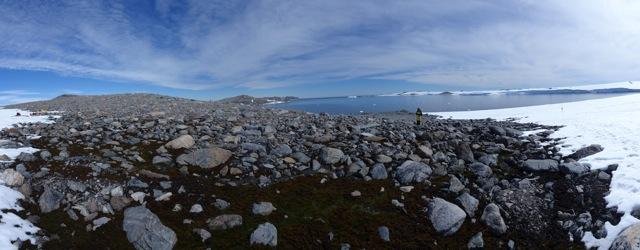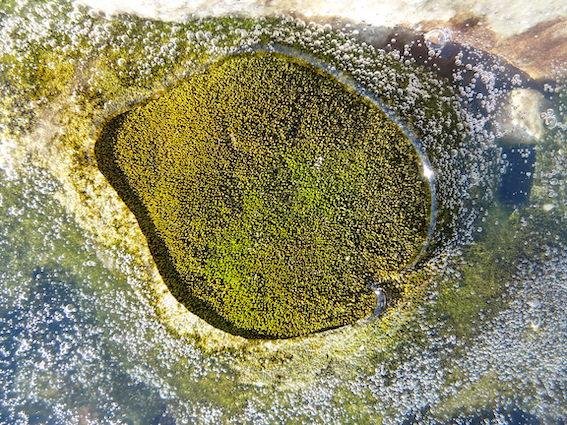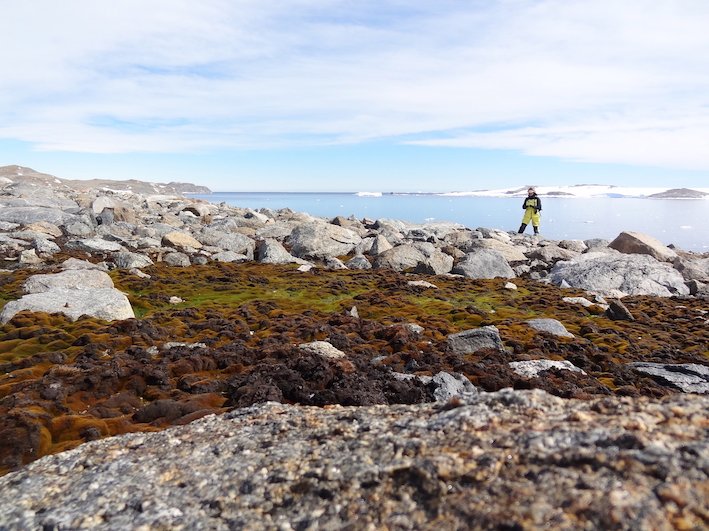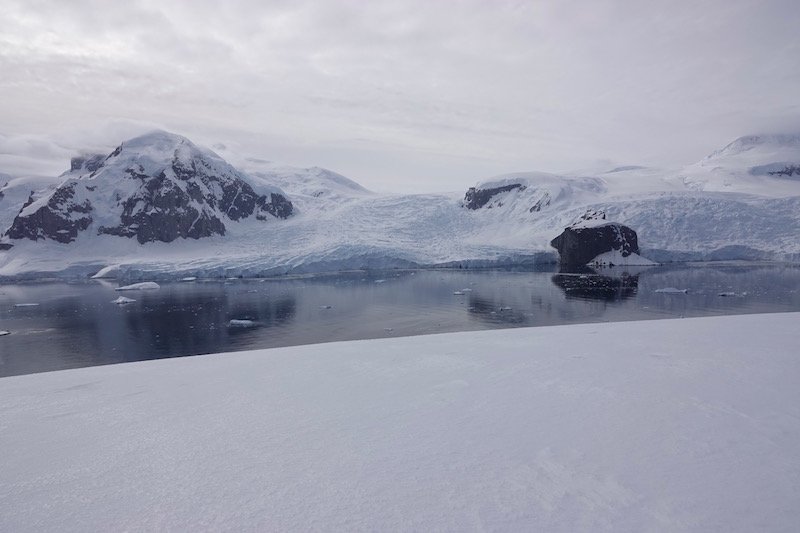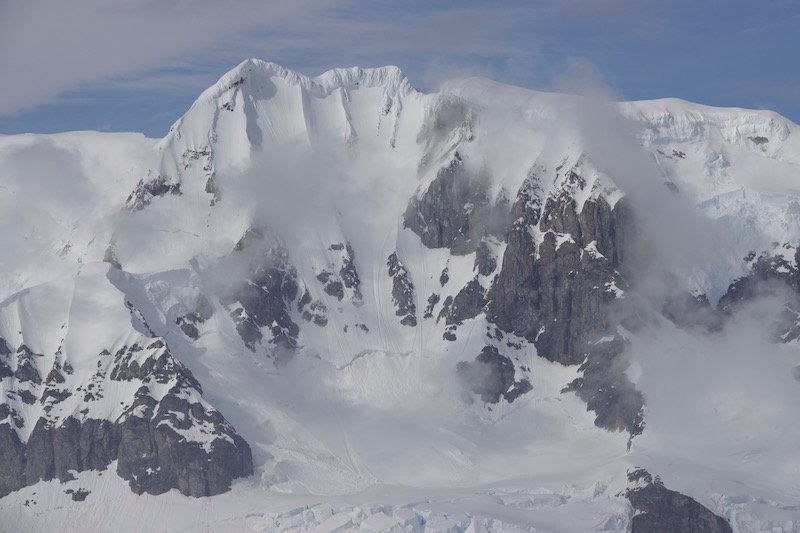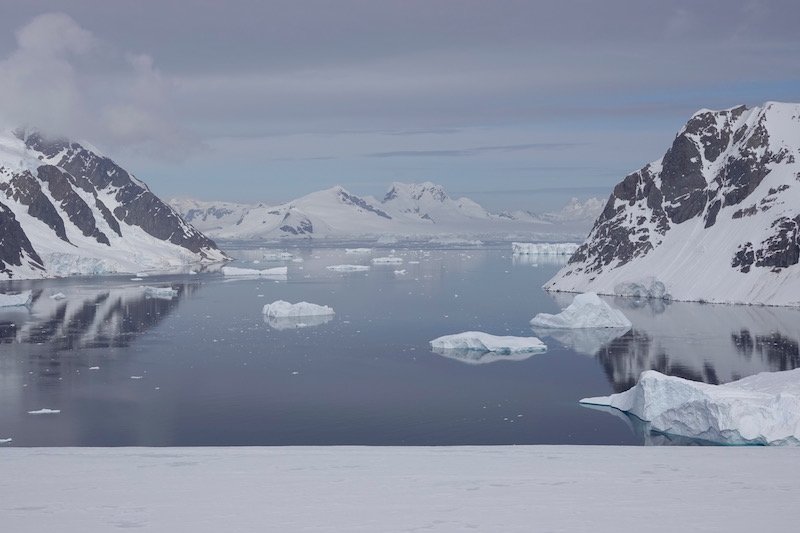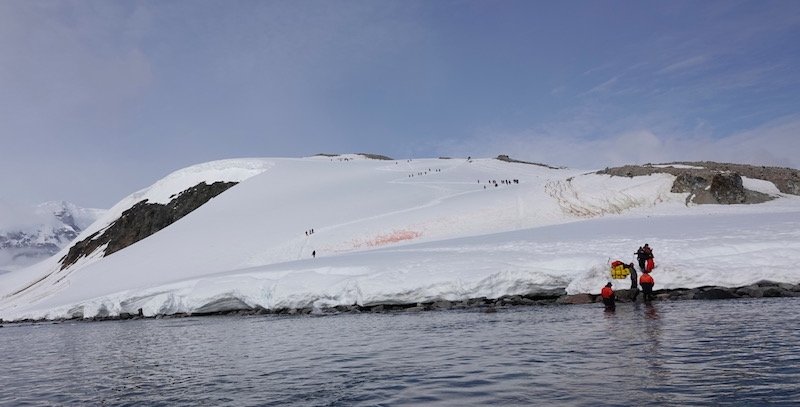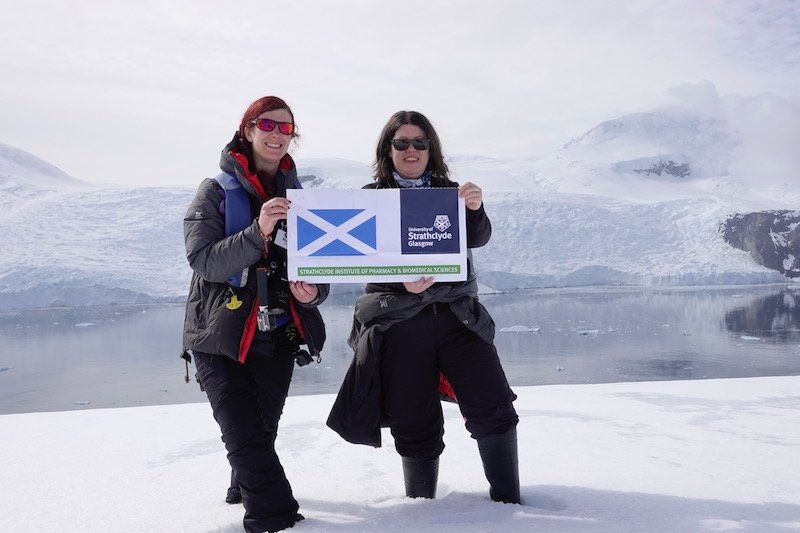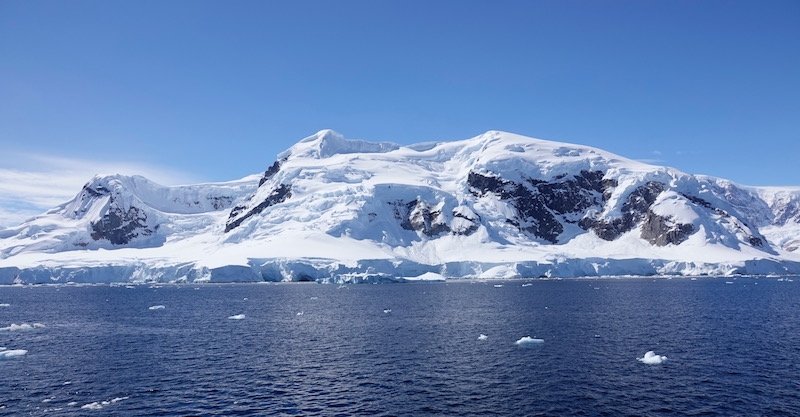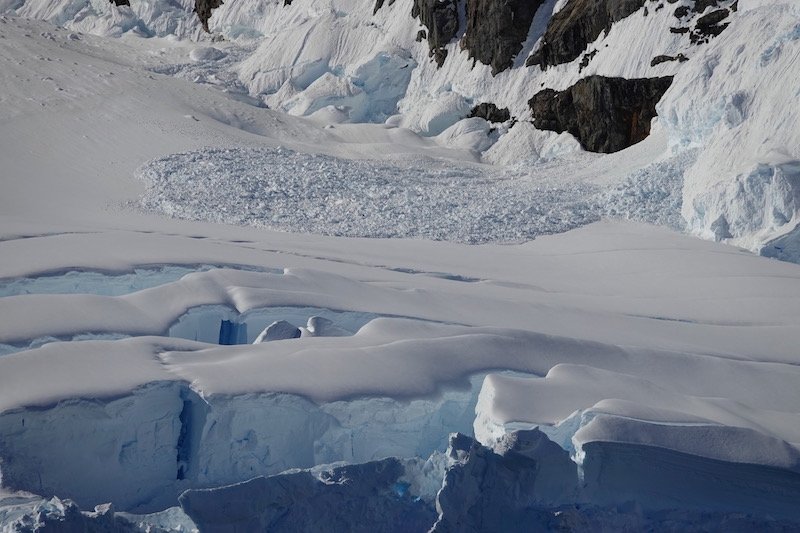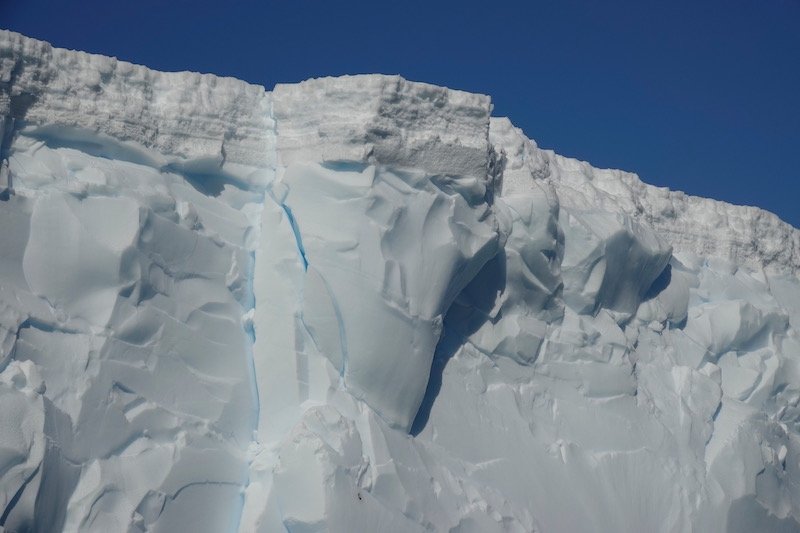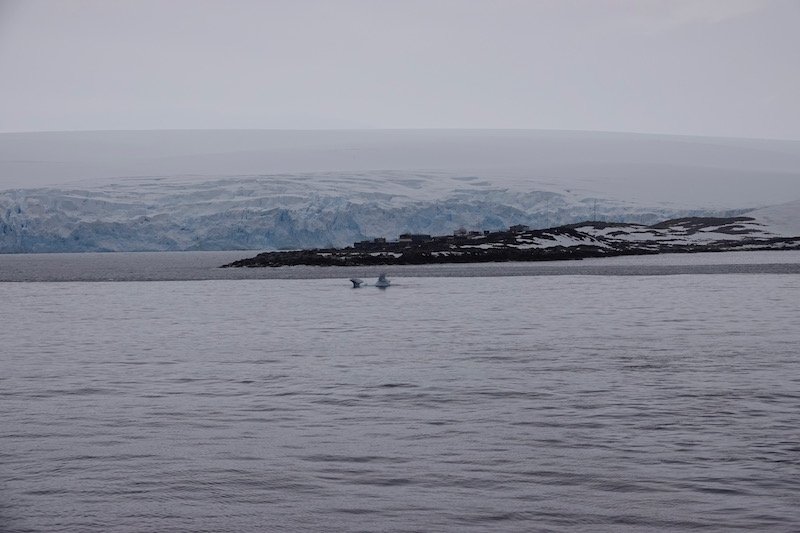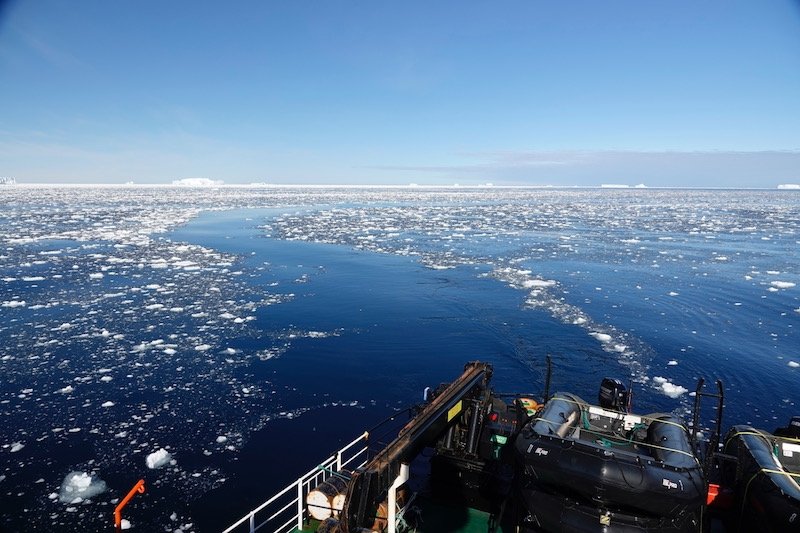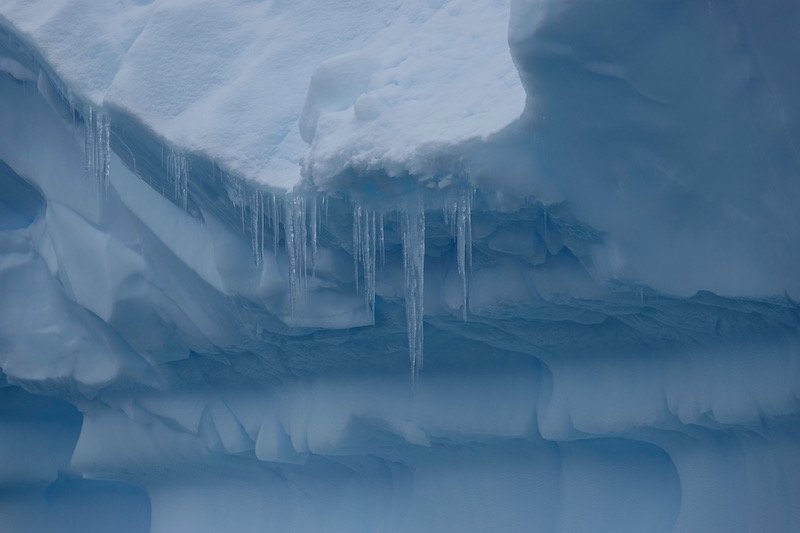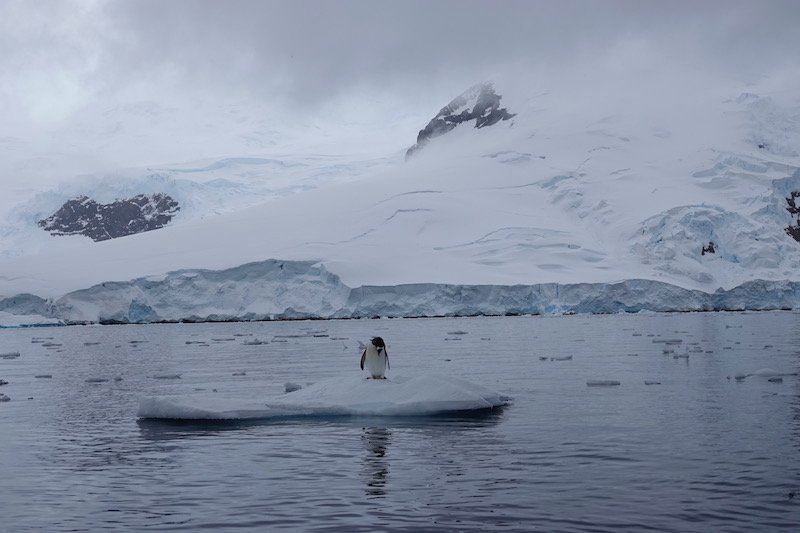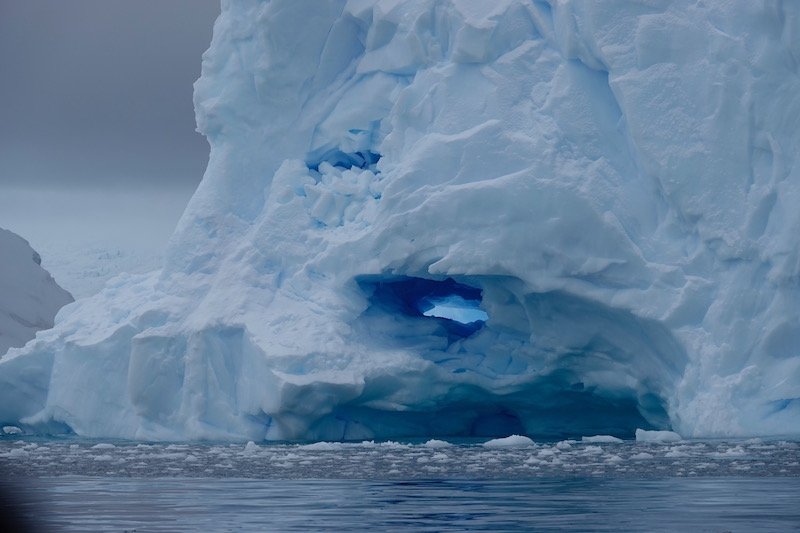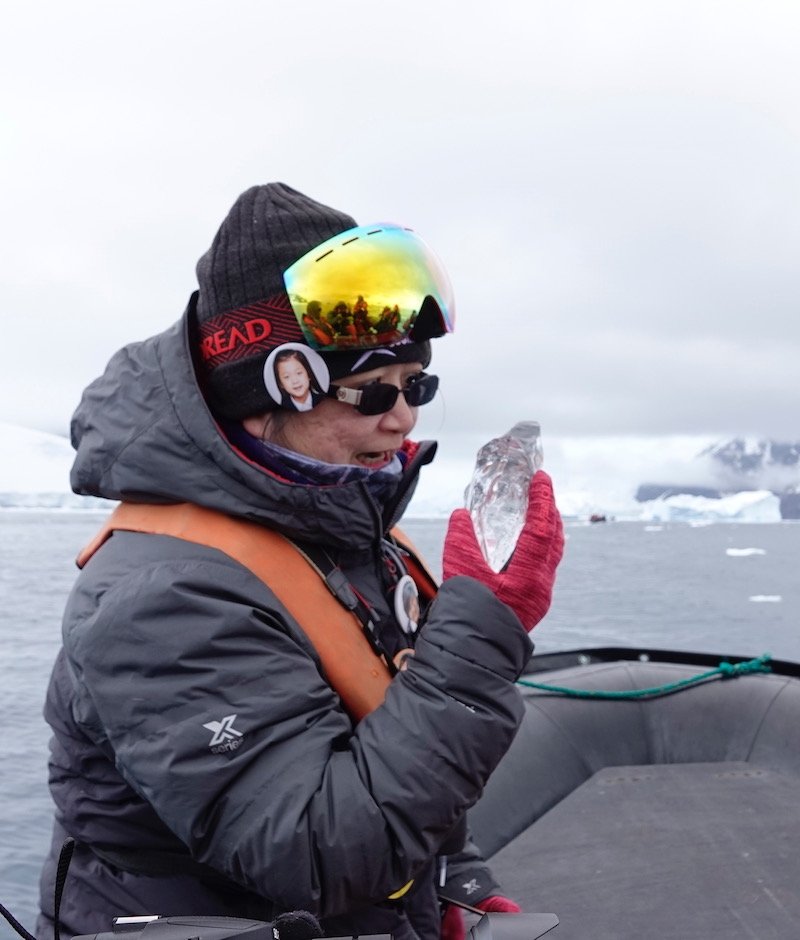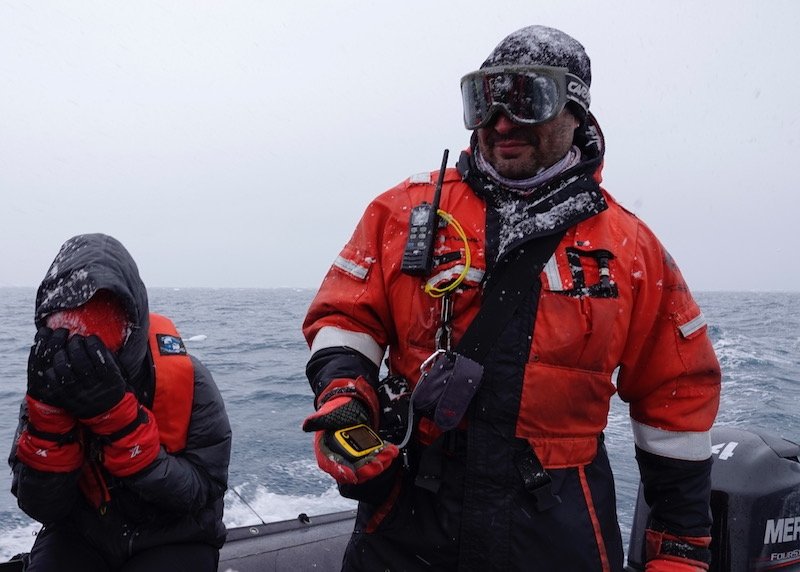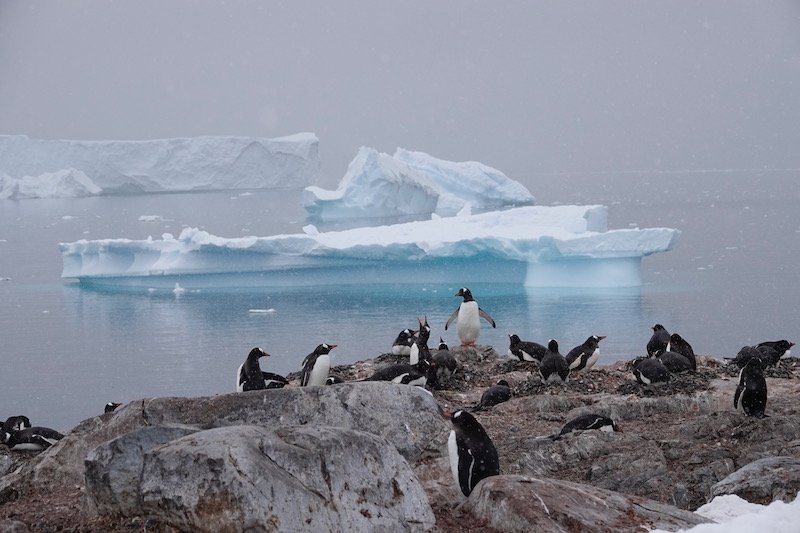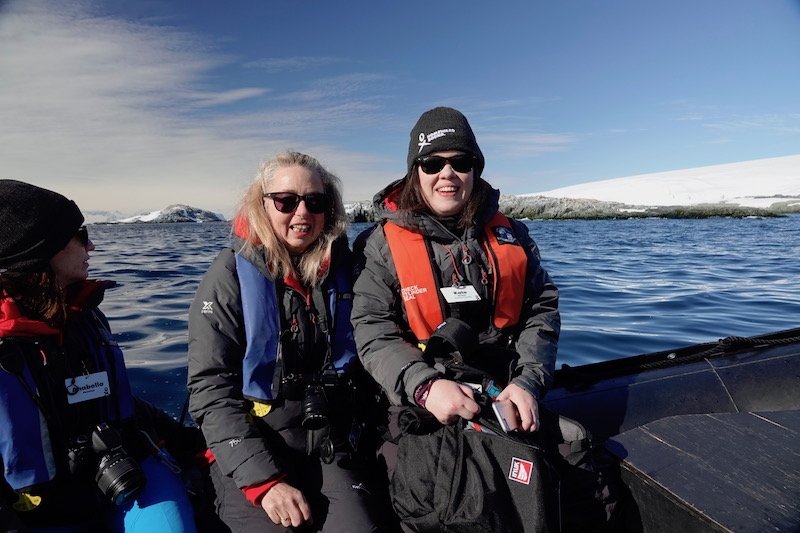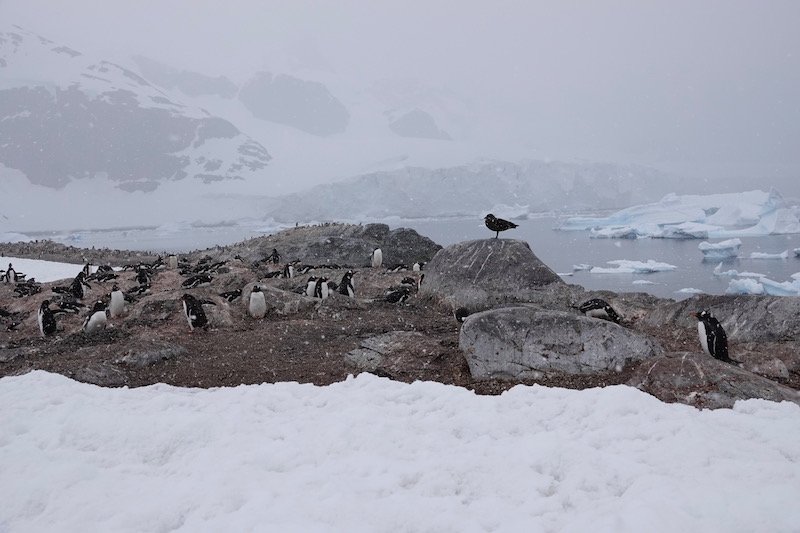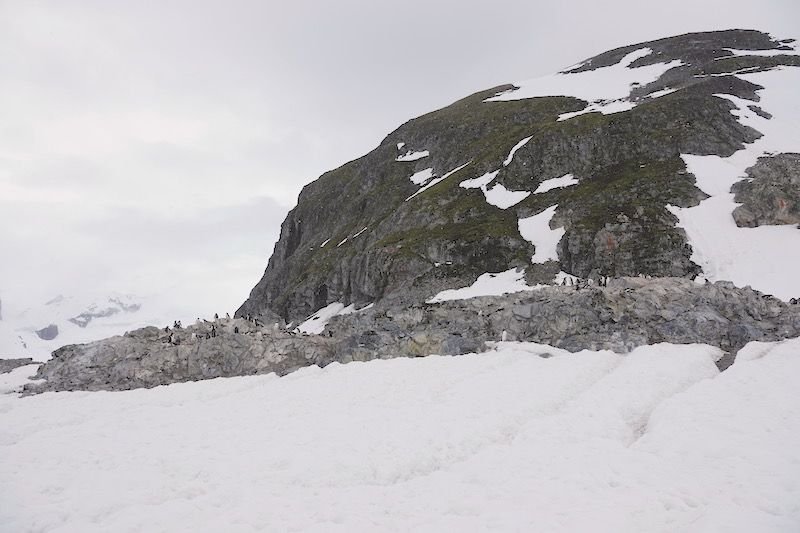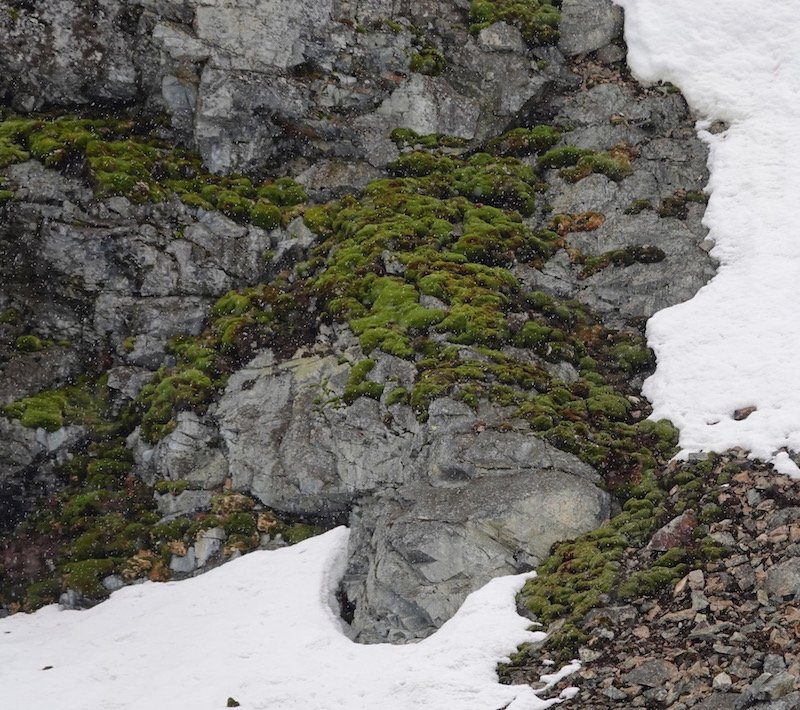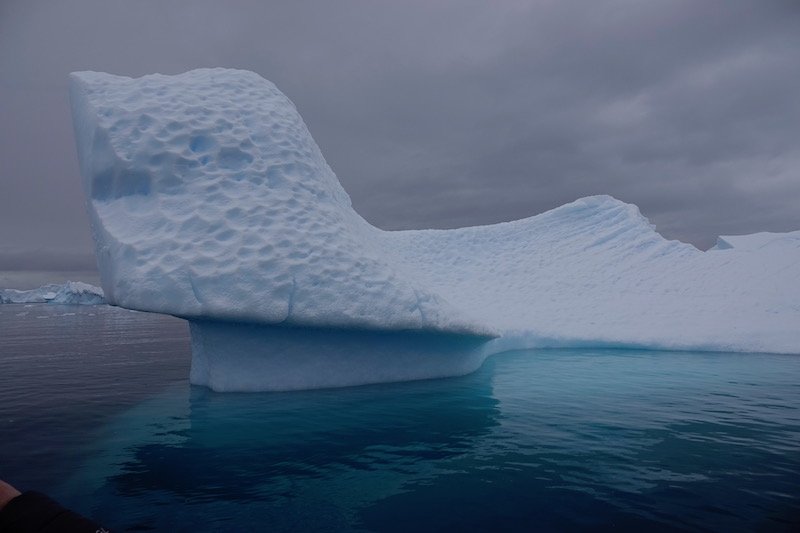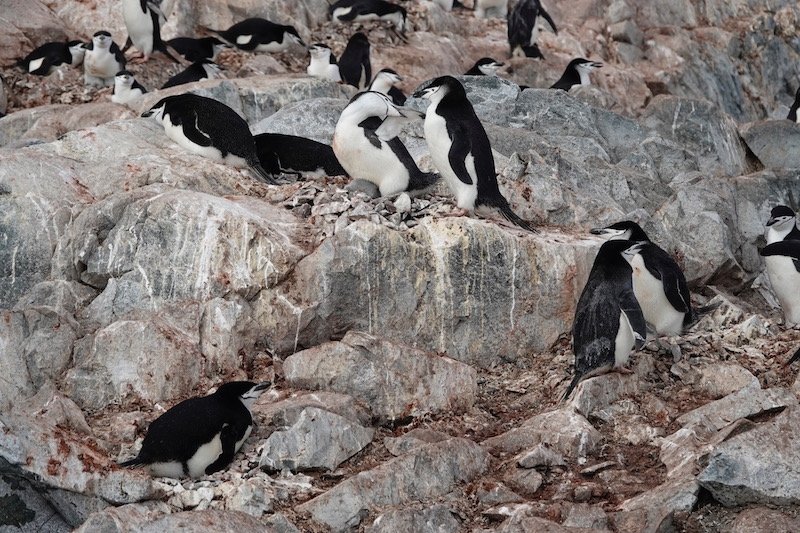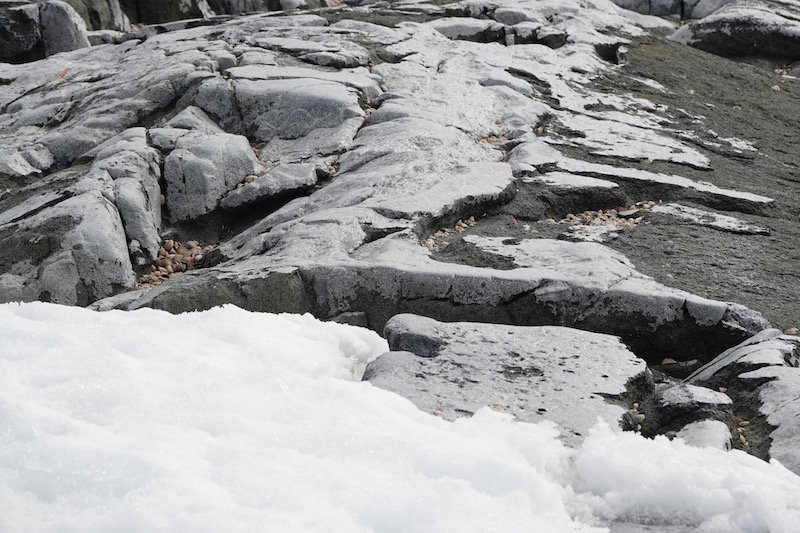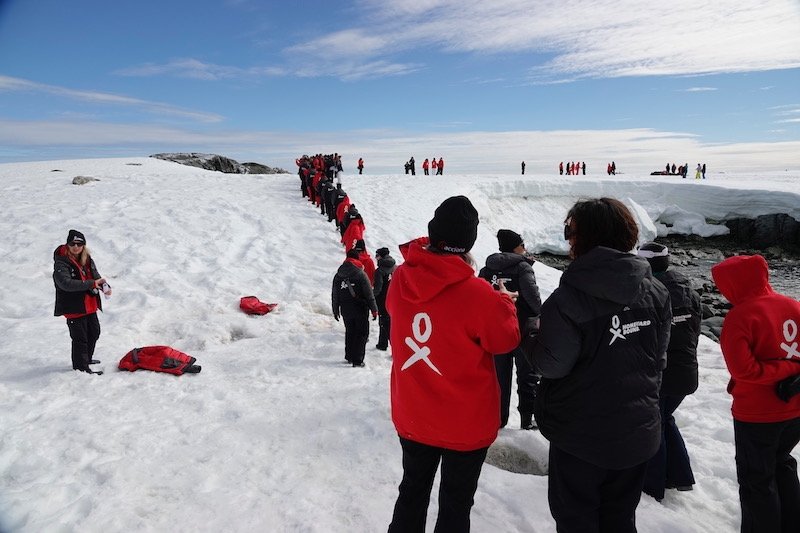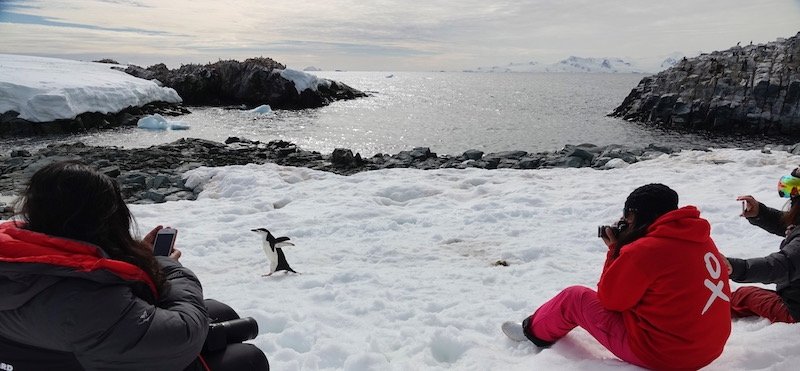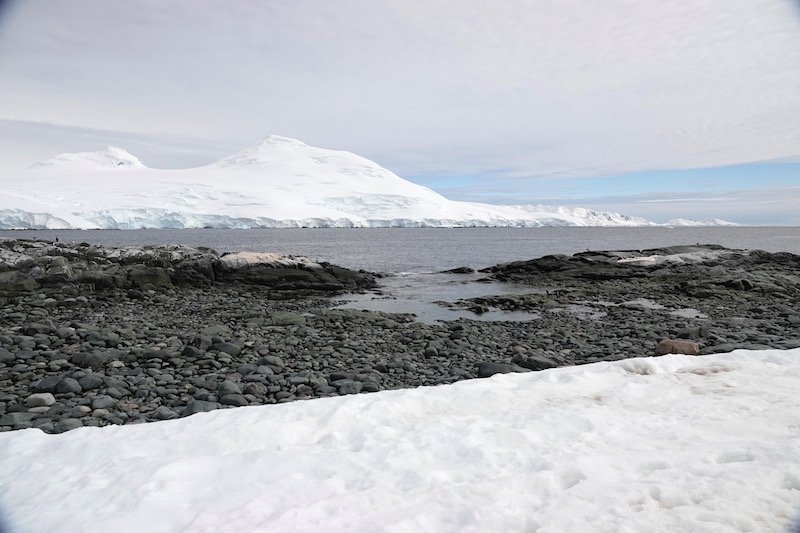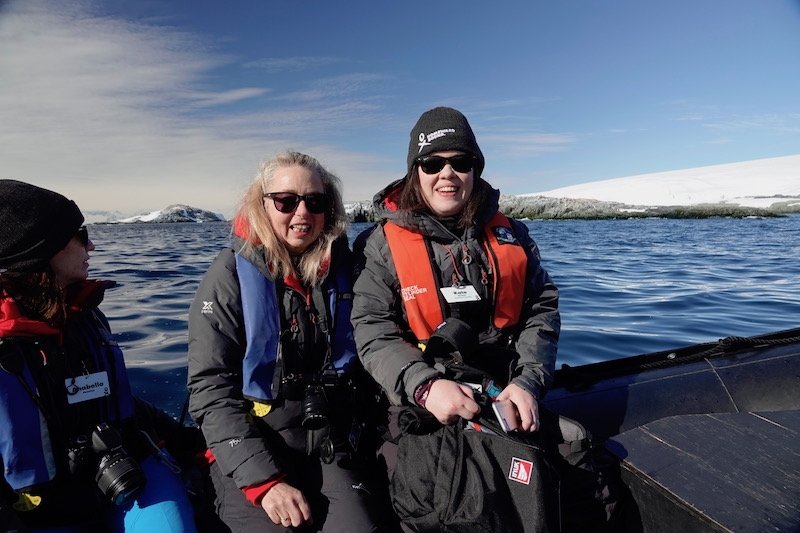Displaying items by tag: Antarctica
Even in Antarctica - it’s hot in the sun!
We know that Antarctica is the frozen planet and we tend to think that its animals and plants must also be well adapted to cold conditions. As a result we probably assume that they do better in cold conditions than other plants or animals. But is that really true?
Working with mosses, the main plants, in Antarctica I have often wondered this? I know they are amazing at surviving the cold. Try putting your salad vegetables in the freezer and you quickly see that many plants are very bad at tolerating freezing. Some plants are even damaged by chilling temperatures above zero (fridge temperatures). But we can collect Antarctic mosses, dry them and put them in the freezer and then take them out after a few months, or more than 50 years, and they will grow again! So yes, they can tolerate freezing conditions - they put up with about 8 months a year in nearly complete darkness and temperatures as low as -40˚C
But that doesn’t mean they like it cold. Are they just able to tolerate cold but would be more productive if summers were warmer? If so, can they warm themselves up above those usually chilly summer air temperatures of 1-2 40˚C? Are they really in Antarctica because they can survive the cold winters while other plants can’t? In which case its more about lack of competition from flowering plants than actually being truly cold loving.
Monitoring moss beds in Antarctic a 20 year story
Climate change is affecting Antarctica and minimally destructive long-term monitoring of its unique ecosystems is vital to detect biodiversity trends, and to understand how change is affecting these communities. Back in the 1990s when I first visited Antarctic the tradies at Casey would ask “So what is happening to the moss?” given that they knew we were studying it. At the time we didn’t know, because long term monitoring was not something that anyone was interested in funding. But it bugged Dr Jane Wasley & I that we didn’t know the answer. So, when State of the Environment Reporting started, we agreed to try and come up with a monitoring system that would answer the question.
Anatomy of a heatwave: how Antarctica recorded a 20.75°C day last month
In late February there were reports of record-breaking high temperatures from scientists working on the Antarctic Peninsula. At the time Diana King and I were in NSW in Australia having spent the summer experiencing smoke pollution from the Australian bushfires along with extremely hot days. Our colleague Dana Bergstrom was sending us reports of rain at Davis Station in East Antarctica. Given that almost all precipitation falls as snow in Antarctica, these were strange reports. Our Chilean colleagues, Marisol Pizarro Rojas and Gustavo Zúñiga were also reporting that there was no snow around the Escudero research station on King George Island and that every day was perfect for field work, a most a worrying development. There is always bad weather sometime in Antarctica!
Homeward Bound 9 - Danko Island, snow algae and silence
We finally get ashore again on Jan 12th. Danko Island is near Cuverville Island where we landed a few days ago and saw Gentoos. It has a steep hill and a few small penguin rookeries. It’s great to walk up the hill where there is a large plateau and stunning views towards the peninsula. Inspired by Christiana Figueres many of us also have a magical silent time, listening to the whales breaching below and the avalanches and the calving glaciers cracking across the water.
On the way up the hill there is a big patch of red snow algae. Snow algae are singled celled algae similar to the ones that cause algal blooms in water. These ones swim in the water that coats the ice crystals within the snow banks. Like algal blooms in lakes and oceans the cells divide when conditions are good and swim off to new territory. They need enough sunlight for photosynthesis and to warm the snow, they also need nutrients which are in ample supply from penguin poo in the vicinity of penguin rookeries.
Snow algae are green algae like Chlamydomonas nivalis but can appear green or red depending on the amount of red carotenoids they produce to protect themselves from too much light (including ultraviolet UV-B). Drs Matt Daveyand Peter Fretwell are using satellites to track these snow algae blooms across Antarctica so if you spot any, take a photo, log the coordinates and send them a message!
It’s a great location for photographs and Rachel Bice is also from Cornwall, where I lived from age 6 to 19 and so we team up for a Kernow flag moment!
The Cornish flag is the flag of Saint Piran, the patron saint of tin-miners. I grew up in tin mining country and the moors where the mining had formerly occurred were great places to search for rose quartz, amethysts and other interesting rocks. Tin was the most important element in the economy of Cornwall but when the mines closed the Cornish took their mining skills all around the world.
Homeward Bound 8 - The A (for Antarctica) factor
Originally, we were supposed to go further south to Verdansky Station, Prospect Point and Petermann Island but once again the sea ice and the weather are against us and it turns out there will be no landings for several days. This can be hard for people to understand in today’s world where travel is seen as relatively straightforward and we can cross the globe in 24 hours by jet. We are used to getting to places on time and can get annoyed if we are delayed for a few hours or redirected.
In Antarctica travel is still very much determined by the elements. Sea ice is still a real danger to shipping, just as it was for early explorers and sealers and whalers. Most ships have ice strengthened hulls but they are still only able to break through relatively small depths of sea ice, and ice can still damage their hulls. Ships can still get stuck in ice, like Shackleton’s Endurance which got stuck, squeezed and eventually sank in 1915. Even today rescue operations are time consuming, expensive and can divert icebreakers from their primary tasks of resupplying stations or doing science. Plus no captain wants to get stuck and have to call mayday.
While we still can’t control the weather, the main advantage we have today is that modern communication and satellites mean that we know what the sea ice looks like before we get there. We also have much better ideas of the weather systems that are on the way. And the ship’s captain can communicate with other ships in the area to find out what conditions are like at sea level. This means that the captain and voyage leader are constantly planning ahead and revising and adapting our voyage plan to ensure we get the best experience and don’t get stuck. As an Antarctic scientist I am well aware of the work that goes in behind the scenes to get expeditioners to stations and back. Because our plans are changing we ask Monica to explain to everyone what has been happening behind the scenes and why we can’t go ashore for a few days. She also gives us a lecture on ice.
Instead of going to Verdansky, we moor up and have a zodiac cruise where we observe sleeping humpback whales, seals and penguins. There are some spectacular glaciers and we see an avalanche as a huge chunk of ice falls off the face of the cliffs. We can also see how fast some of these glaciers are retreating with climate change.
The next day the ship takes up to the edge of the ice (Flanders Bay) and we see the spectacular variations in sea ice forms including the thin films of grease ice and the wonderful fluffy disks which are called pancake ice. We also see some massive icebergs (kilometers long) that have calved off the retreating glaciers.
Just last week, a ship searching for the wreck of Endurancewas forced to abandon its search because of heavy sea ice. They also lost their autonomous underwater vehicle because of inclement weather and bad sea ice conditions.
Homeward Bound 7 - Palmer, peatmoss and politics
We were booked to go ashore at Palmer Station, the American base on Anvers Island, on the 9thJan, but the brashy, sea ice had blown in around the station making it too risky for the Ushuaia staff to take zodiacs in. So about 10 expeditioners from Palmer come aboard the ship to tell us about the science that is happening on the base.
I am really happy to see that one of my colleagues from the US Dr Zicheng Yu(Zic) from Lehigh University, is one of those researchers. Like my group, Zic is using stable isotopes of carbon, and also oxygen, to understand how plant growth is affected by climate change in Antarctica. Specifically, Zic is a paleoecologist and works with peat mosses. These are mosses that have been growing for thousands of years in wet, boggy sites and the older mosses become compressed and peaty as the plants above press down. The wetness helps to preserve the moss which means it can contain climate records that go back for thousands of years. Zic has sampled such mosses from Patagonia and is interested in how far South the peat mosses extend. The Antarctic mosses we work with are younger, hundreds, rather than thousands of years old, but we are working with individual plants, not peat. In peat there can be layers and layers of different mosses and even grasses and other plants as you delve down into the core. Our individual plants are only a few centimeters tall whereas peat cores can be meters deep. It’s all a matter of scale. In East Antarctica the mosses grow a few millimeters each year, whereas on the peninsula they might grow a whole centimeter in a year!
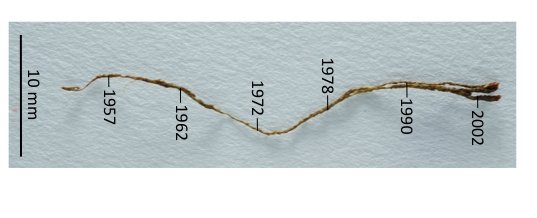 Zic and I last met at the SCAR Open Science meeting in Davos in June, when Dr Melinda Waterman and I spoke at the same session as him. Zic tells everyone on the ship about the work that we are doing on Antarctic moss which is great visibility for me! He also has a University research position in China and so I introduce him to the Chinese HB3 team.
Zic and I last met at the SCAR Open Science meeting in Davos in June, when Dr Melinda Waterman and I spoke at the same session as him. Zic tells everyone on the ship about the work that we are doing on Antarctic moss which is great visibility for me! He also has a University research position in China and so I introduce him to the Chinese HB3 team.
After the formal session we go onto the front deck for photographs and also get to talk to the Palmer staff. It’s really nice to meet a range of expeditioners including scientists and the staff who keep the station running and support the researchers on the base.
All the expeditioners at Palmer were affected by the US Government Shutdown. Staff employed by the government were working for no pay and having trouble ordering supplies for the station for the coming season. Some of the scientists cannot get to their sites to do research, because the public servants in the US who prepare the permits are on furlough and can’t process the permits. This is such a waste of everyone’s time and is ultimately a waste of the NSF grant money. I am hoping that some of this has resolved since we got back and Zic and his colleagues got their work done. Lets hope the rest of the season is productive for them all.
Palmer is part of the Long-Term Ecological Research (LTER) Network with a study area extending North and South of Palmer from the coast to several hundred kilometers to the west side of the Antarctic Peninsula.
Homeward Bound 6 - Glacier zodiac cruise in Anvord Bay, near Neko Harbour,
We were supposed to go ashore at Neko Harbour but it was ice bound. The wind has blown the sea ice close to shore and so we can’t get ashore in the zodiacs. It’s too dangerous to risk puncturing them.
So, we have a glorious glacier cruise and see more spectacular ice formations both cascading off the continent and in the icebergs and sea ice.
We collect clear, black ice for the bar and see glacial deposits where rocks and silt are layered into the icebergs.
We also find some moss on a Point near Neko Harbour. I am hoping it’s a new description and we can go back to study it! Although it’s on a pretty sheer rock face so it would be tough to collect. I think we would need a drone to collect samples for us.
We were on an iceberg cruise on the zodiac and our guide was Juan, a fellow plant enthusiast so when I spotted green through my binoculars and asked if it was moss or algae, he was happy to get closer to check it out. It was on a huge volcanic plug with full length dykes running down the steep cliffs.
On one side was a stream of moss cascading down terraced steps in the rock face. Very exciting. Just above the moss we spotted 2 Antarctic tern chicks which were probably helping to fertilise the moss stream.
Then of course we were miles from the ship and the weather closed in so it was foggy on the way back and for the first time we had to navigate back to the ship on GPS. It was cold and felt properly Antarctic in the zodiac and we had to keep an eye out for bergy bits of sea ice. Very exciting for us all because it felt a bit intrepid, but I didn’t want to get a reputation for being the last one back on the zodiacs and holding up the ship. Don’t want to set a bad example!
Homeward Bound 5 - Cuverville Island
Each day the participants on the voyage spend 4-5 hours on the leadership program and we attempt to have a landing or a zodiac cruise if landings are not possible. I am leading the on board science program with Dr Katherine Duncan from the University of Strathclyde. Kate was a participant on the second voyage (HB2) back in March. We hadn’t met before this voyage but had talked on whats app and zoom calls whilst preparing the program along with the science faculty founders, Dr Justine Shaw (University of Queensland) and Dr Mary-Anne Lea (University of Tasmania). Kate is a wealth of knowledge about the HB program, the ship and what we need to bring with us. Luckily, both she and Dr Sophie Adams (our wellbeing guru and also a HB2 alumna) brought real coffee, an important component for wellbeing on the ship as elsewhere!
Having only met on the 28thDecember, Kate and I are now sharing a cabin, running a science theme together, enjoying our new-found friendship and planning future science grant applications. We also get to be on one of the first zodiacs ashore in order to supervise the landings and are often last back as we round up the stragglers who just want an extra minute ashore and, that last photograph or video.
The next landing is on Cuverville Island (7thJan) where we find Gentoo penguins nesting and skuas patrolling.
Cuverville Island is very snowy and the chicks were tiny, but at one end it has the most amazing wall of moss, a whole cliff face, green and grey against the white-grey sky. I would love to visit again and take moss samples for dating, to see how old these moss forests are.
We watched penguins rolling eggs or feeding chicks as well as well as mating. Presumably many of these Gentoo penguins have also had aborted attempts at rearing their first clutch of chicks this season.
I take the opportunity to segue from penguin sex to moss sex to the amusement of the nearby participants and Fern Hames (Arthur Rylah Institute)our on-board Sci-Comms facilitator.
On the way back to the ship we have a spectacular iceberg cruise, full of amazing blue, turquoise and white shapes against the grey of the sea.
Antarctic moss biflavones show high antioxidant and ultraviolet screening activity
Ceratodon purpureus is a cosmopolitan moss that survives some of the harshest places on Earth: from frozen Antarctica to hot South Australian deserts. In this study we isolated nine compounds from Australian and Antarctic C. purpureus and considered how they might help this species to survive under such extreme conditions.
Homeward Bound 4 - Hydruga Rocks
The Ushuaia then started sailing down the western side of the peninsula and the following day (6th Jan) we went ashore at Hydruga Rocks where we saw Chinstrap penguins nesting. There was lots of snow as we moved southwards down the peninsula and this is not good news for the nesting birds, since most of them want rocky surfaces to nest on. Frequent falls of snow during the summer mean that the penguins have trouble finding nesting sites and pebbles to build their nests and Monica thinks that many have already had failed attempts at nesting this season. Many are still sitting on eggs, possibly their second attempts this year and the chicks we see are very small.
There are also weddell and crabeater seals on the island as well as giant petrels, Antarctic sheathbills and cormorants. The kelp gulls have assembled a midden of limpit shells on the crest of the island near their nest sites.
The soft snow also makes for interesting travelling for us. Many of the participants are new to walking in snow and it proves especially challenging when we attempt to assemble everyone into a heart shape for some Homeward Bound publicity shots. Penguins even come up to see what we are are doing.
That night we moor in the peaceful and stunningly beautiful Wilhelmina Bay and enjoy the frolicking of lots of humpback whales.

